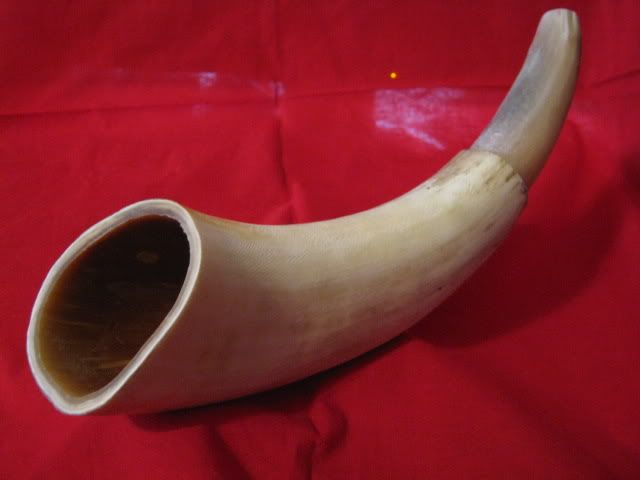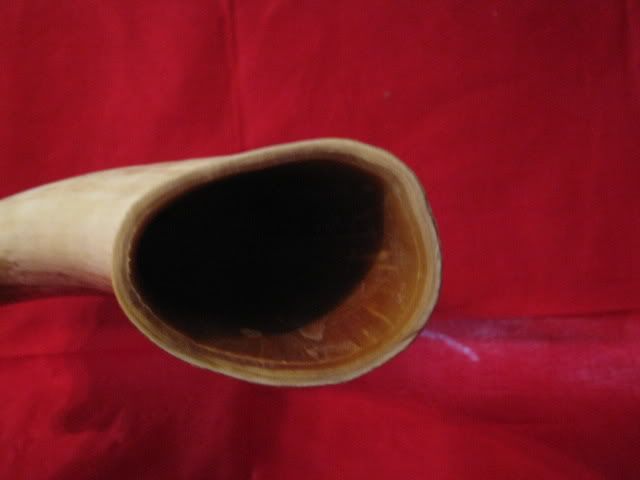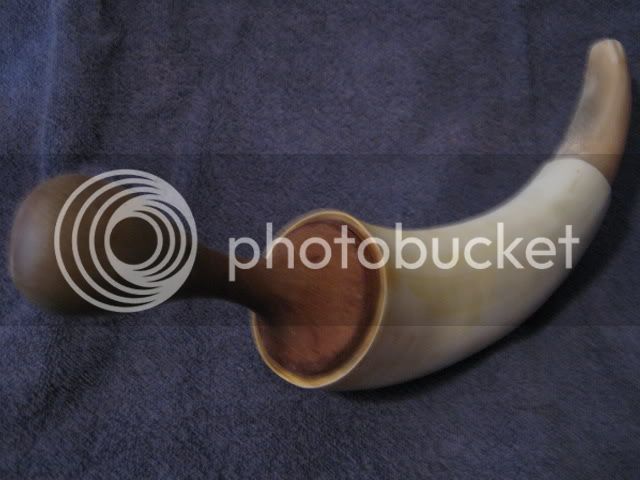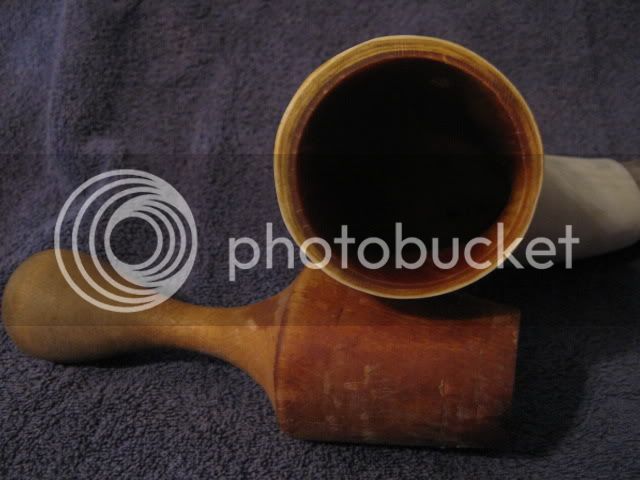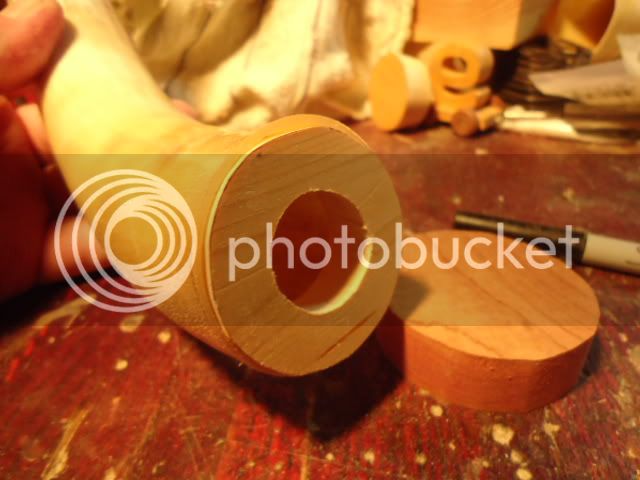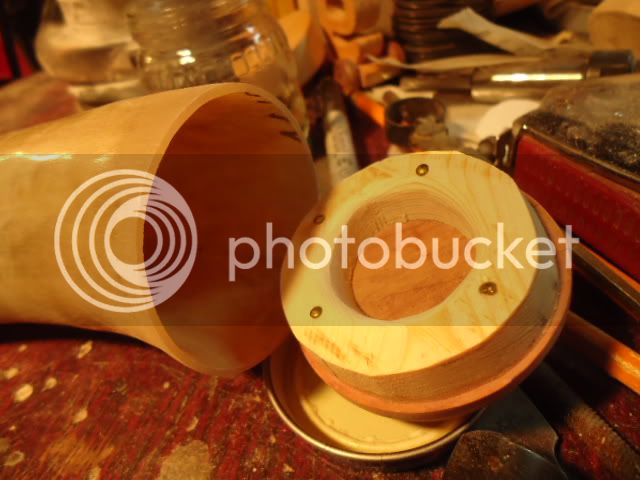horner75's advice is spot - on ... I tried the boiling water thing and was rewarded with a clean and un molded base ... a fry daddy is a good investment (check out yard sales and so on - it need not be pretty, it need only get hot) a good thermometer is also a wise investment.
I take mine to 375F - your mileage may vary. use a good pair of gloves that you can get off your hands very quickly if you have to, and (I shouldn't have to say it, but I've see folks do dumb stuff too often) you should have a fire extinguisher handy. watch out that you don't get the horn too hot - I wait until I see a thin flow of what look like milky white stuff come from the horn (I think it's bubbles) and then I pull it out. it's OK to do 'dunk and try" - I use ten or fifteen second immersions. then try to squeeze it and if it's soft, shove the tapered molding plug in there and let stand overnight.
if you don't have access to a lathe, you can still make a good butt plug - press the base into a Styrofoam plate and use that impression as a pattern. it will take a bit of whittling, but your plug will look pretty darn good at the end of the project. there's a good tutorial on this technique (I think horner75 wrote it), but I can't find it.
good luck with your projects!







